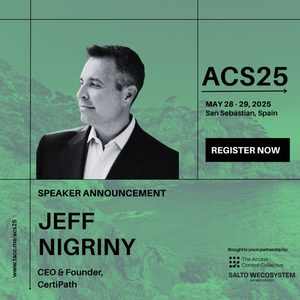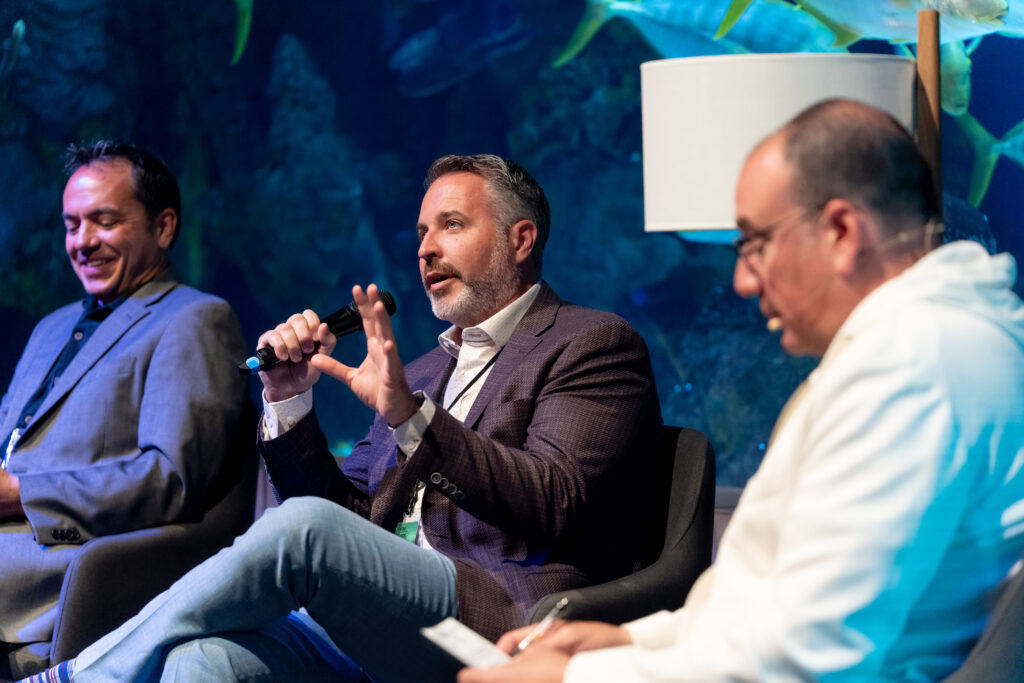CertiPath CEO Speaks at 2025 Access Control Summit
 A product’s ability to integrate with other products is absolutely crucial in the access control space, as Jeff Nigriny pointed out at the 2025 Access Control Summit (ACS25), an annual, invitation-only event for executives, thought leaders, and industry professionals from the access control, smart lock, and related industries.
A product’s ability to integrate with other products is absolutely crucial in the access control space, as Jeff Nigriny pointed out at the 2025 Access Control Summit (ACS25), an annual, invitation-only event for executives, thought leaders, and industry professionals from the access control, smart lock, and related industries.
The Founder and CEO of CertiPath spoke on a panel entitled “How the Ecosystem is Reshaping Access Control: The Value Arbitrage Revolution,” during ACS25, held May 28 and 29, 2025, in San Sebastian, Spain.
The panel explored how today’s interconnected technology ecosystem is fundamentally reshaping the access control industry and creating new value arbitrage opportunities in which forward-thinking companies exploit the gaps between traditional and emerging business models. It examined why ecosystem participation now outweighs standalone product excellence, as businesses capitalize on the valuation disparity between conventional hardware-focused approaches and modern data-driven strategies. Panelists described a revolution in which customer priorities have evolved from isolated product features to comprehensive ecosystem benefits, allowing strategically positioned players to capture disproportionate value at key ecosystem connection points.
 “Let’s talk about how we got here,” Nigriny addressed ACS25 participants, “with REST integration. It takes a village. Flickr started REST around 2000, but it was Amazon that adopted it to facilitate a marketplace or markets. eBay quickly followed suit, and the rest is history.
“Let’s talk about how we got here,” Nigriny addressed ACS25 participants, “with REST integration. It takes a village. Flickr started REST around 2000, but it was Amazon that adopted it to facilitate a marketplace or markets. eBay quickly followed suit, and the rest is history.
“Small businesses want single solutions; enterprises have their identity wrapped around not being one-size-fits-all shops. They have hired staff specifically to take COTS and integrate it. They often have distinguished engineer tracks to retain in-house integrators and sophisticated administrators. These people study various components, identify the best ones, and strive to bring them together in support of their enterprise.
“We are at a point where it is better to specialize in your core function and expect customers will wrap your product with others that execute their capabilities at the top of their respective areas. Anything a product includes better be world class, or it will drag down those features that you made a product for in the first place.
“Although we started with integrating disparate applications, we have progressed down the stack to where we can now integrate disparate data. I tried doing this for the NATO community from 2002 to 2009, and it was too difficult. No one could agree on a common taxonomy of data elements let alone the roles that should be able to access them. The lesson learned was that there were sovereign governments that do not collaborate on language standards well; language is part of what they hold as their sovereign identity. The Internet and IT more generally is typically apolitical; this has been an enormous advantage to the advancement of common taxonomies.
“CEF, or Common Event Format, is a great example of how cyber has come together and created an open source standard for any security tool to encode its logs such that SIEM, or Security Information and Event Management, tools can ingest and create actionable combined intelligence from any endpoint application acting as a sensor.

Jeff Nigriny, center, speaking at ACS25
“Access control has an enormous opportunity here. In the access control space, you can be a sensor, an interpreter, or an effector/actuator. You can be one or two of these but not all three. If you try to be all three, you are a closed proprietary system and no one’s closed system is nearly as good as the integrated solutions that exists in our space today. The entirety of the integrator community has grown up around this fact. Making your products more standards compliant and more open actually helps you win business in such an environment, even though it might seem counterintuitive.”